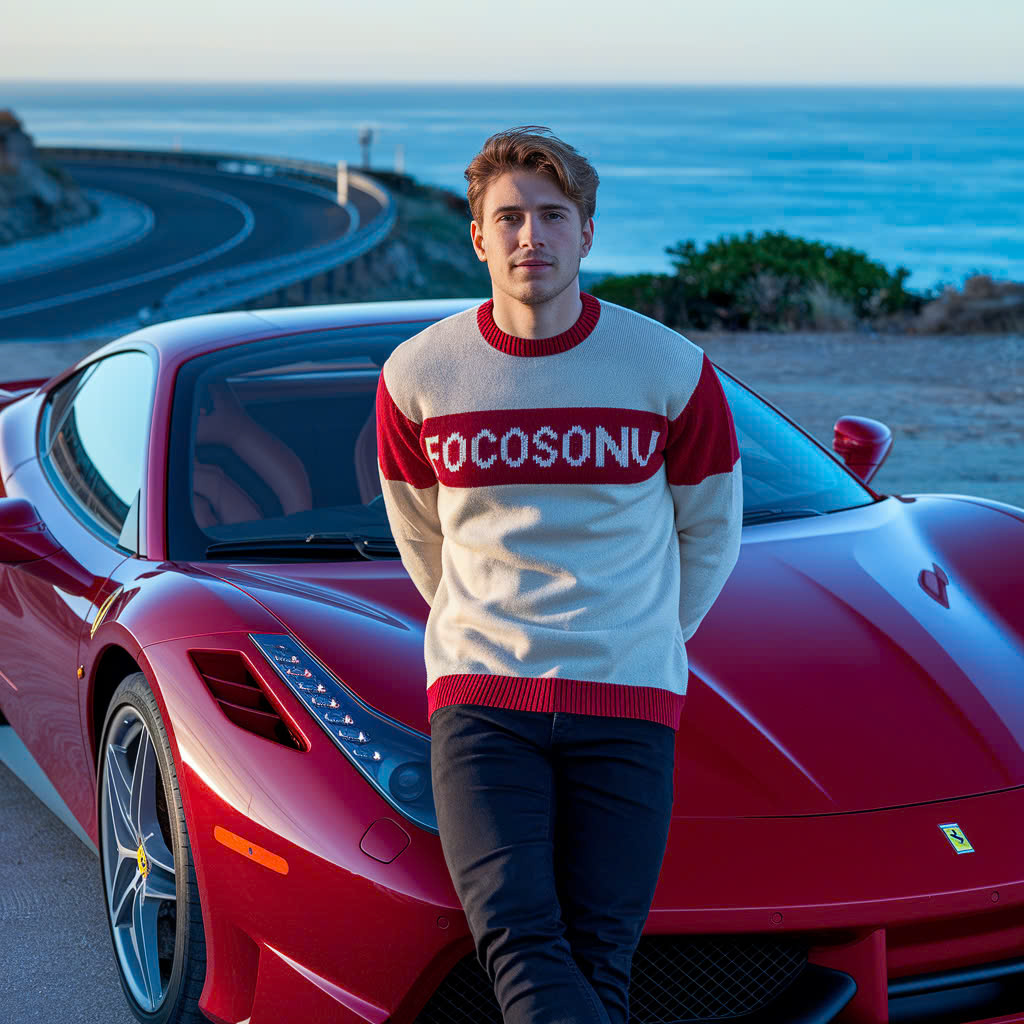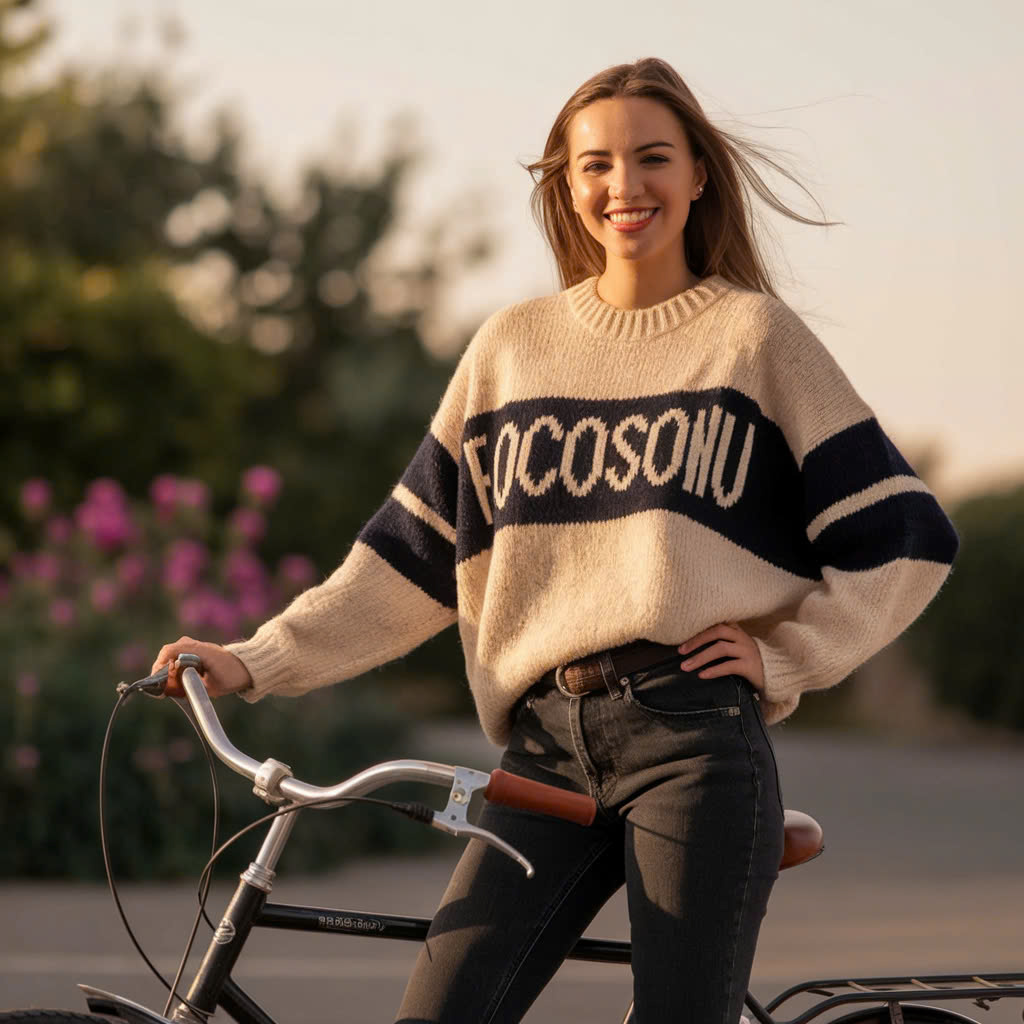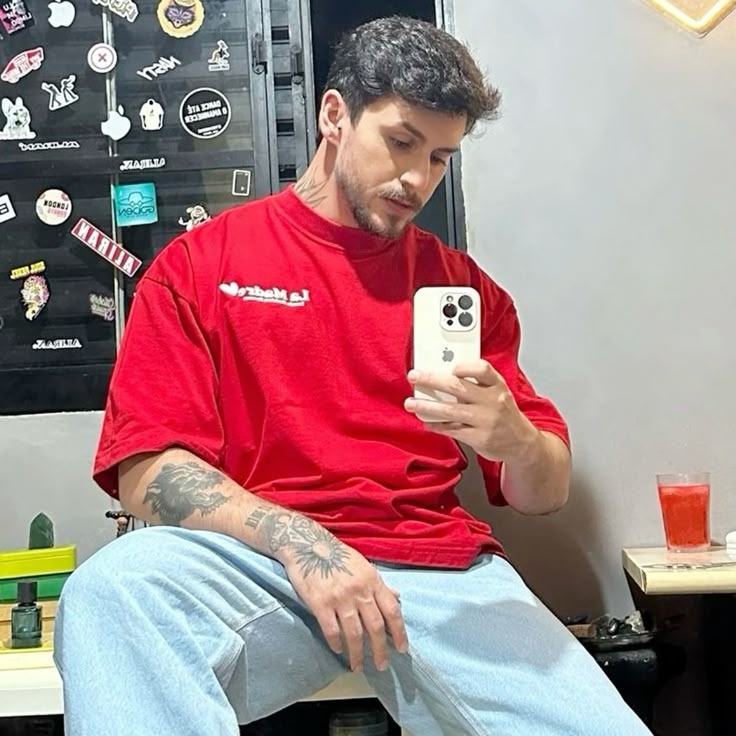Sweaters have long transcended their original role as simple garments to become indispensable elements of modern fashion and personal expression. These versatile pieces, which began as functional attire to protect against harsh weather, have evolved into symbols of craftsmanship, culture, and innovation. In this article, we delve into the rich history of sweaters, examine their design evolution, explore their cultural impact, and consider what the future holds for this enduring wardrobe essential.
Historical Origins and Early Utility
The history of the sweater is rooted in practicality. In the cold climates of Europe and North America, people originally hand-knitted garments to provide much-needed insulation against the elements. Early knitwear was crafted using locally sourced materials such as wool and roughspun cotton, valued for their natural warmth and durability. Families passed down knitting skills through generations, and each sweater became not only a piece of clothing but also a repository of tradition and community identity.
During the 18th and 19th centuries, as industrialization began to change the textile landscape, the production of sweaters shifted from artisanal home-made creations to mechanized manufacturing. This transformation made sweaters accessible to a broader population while simultaneously introducing standardized designs and knit patterns. Although mass production brought affordability and convenience, it also sparked debates about the loss of individual craftsmanship—a debate that still resonates today among fashion connoisseurs and ethical consumers.
From Function to Fashion: The Evolution of Design
While early sweaters were primarily designed for warmth and durability, the evolution of design over the decades has seen these garments adopt a broad range of aesthetics. During the early 20th century, as urbanization increased and lifestyles became more dynamic, designers began reimagining sweaters as fashion statements. The introduction of diverse silhouettes and innovative knit patterns transformed the humble sweater into a versatile item suitable for multiple occasions.
By the mid-20th century, the classic pullover and cardigan emerged as distinct styles, each with its own identity. The pullover, with its simple, slip-on design, became synonymous with laid-back casual wear, while cardigans—often fastened with buttons or zippers—offered a more refined look that could be layered over formal attire. In the 1960s and 1970s, designers experimented with bold colors, oversized fits, and unconventional textures, reflecting the era’s spirit of rebellion and individualism.
Today, sweater design balances tradition and innovation. Modern knitwear often incorporates sleek lines, asymmetrical details, and mixed materials, allowing wearers to express both their style and personality. Whether it’s a meticulously crafted cable-knit design or a minimalist, streamlined silhouette, every sweater tells a story of evolving fashion sensibilities.
Diverse Styles for Every Taste
The world of sweaters is remarkably diverse, offering options that cater to a wide range of tastes, occasions, and climates. Some of the most popular styles include:
- Pullover Sweaters: Known for their simplicity and comfort, pullovers are designed to be worn over the head. They come in various necklines—crew, V-neck, or even boat neck—allowing for versatility in layering and pairing with different outfits.
- Cardigans: Characterized by an open front and often secured with buttons or zippers, cardigans offer flexibility and ease of wear. They are a favorite during transitional weather, easily layered over shirts and under jackets.
- Turtlenecks: These sweaters offer extra warmth and a touch of sophistication, making them ideal for cooler climates. Their high neck design not only provides insulation but also adds a classic, elegant look to any ensemble.
- Cable-Knit Sweaters: Recognized by their intricate braided patterns, cable-knits are a nod to traditional hand-knitting techniques. Their textured appearance makes them popular among those who appreciate a blend of artistry and functionality.
- Oversized and Chunky Sweaters: Emblematic of modern casual chic, these sweaters are designed for comfort and relaxed style. Their voluminous fit makes them ideal for layering and for creating a statement look in everyday wear.
Each style reflects different cultural trends and personal preferences. Whether someone values the heritage of traditional knitting or the innovative edge of contemporary design, there is a sweater to suit every wardrobe.
Cultural Significance and Pop Culture Impact
Sweaters have played a pivotal role in shaping cultural narratives and trends across the globe. Their presence in literature, film, and music has elevated them from mere garments to cultural icons. In classic films, the sweater often symbolizes warmth, nostalgia, and personal intimacy—a token of care and comfort that connects characters to their past and to one another.
In the realm of music, musicians and performers have frequently used sweaters as a signature part of their style. Iconic figures in the world of rock, pop, and indie music have been seen sporting unique knitwear that resonates with their public persona. For example, vintage cable-knit jumpers and cardigans are often associated with the indie aesthetic, lending an air of authenticity and laid-back cool.
Social media has further amplified the cultural significance of sweaters. Fashion bloggers, influencers, and everyday users alike share images of their favorite knitwear, sparking trends and discussions about style and sustainability. Platforms such as Instagram and Pinterest are replete with creative interpretations of sweater fashion—from DIY upcycling projects to high-fashion editorials—demonstrating the garment’s timeless appeal and versatility.
Sustainability and Ethical Fashion
As consumers become increasingly aware of the environmental impact of fast fashion, there has been a significant shift toward sustainability in the production and consumption of sweaters. Many modern brands now emphasize ethical sourcing of materials, responsible manufacturing practices, and longevity in design.
Natural fibers such as organic cotton, sustainably harvested wool, and cashmere are at the forefront of this movement. These materials not only provide superior warmth and comfort but also have a lower environmental footprint compared to synthetic alternatives. Additionally, advances in eco-friendly dyeing and finishing techniques have further reduced the environmental impact of sweater production.
Upcycling and recycling initiatives are also gaining momentum. Vintage sweaters and discarded knitwear are being reimagined into modern designs, reducing waste and giving old garments a new lease on life. This commitment to sustainability is not just a trend—it reflects a broader cultural shift toward valuing quality, durability, and ethical production in fashion.
Innovative Techniques and Technological Advances
The modern sweater is the result of a harmonious blend of traditional techniques and technological innovation. While hand-knitting remains a cherished art form, new technologies have revolutionized the way sweaters are designed and manufactured. Techniques such as 3D knitting, seamless construction, and computerized patterning have allowed designers to push the boundaries of creativity while ensuring a perfect fit and enhanced comfort.
3D knitting, for example, enables the production of garments with minimal seams, reducing bulk and improving overall wearability. This technology not only streamlines the manufacturing process but also allows for intricate design elements that would be difficult or impossible to achieve through traditional methods. Similarly, computerized patterning ensures precision in knit designs, maintaining consistency in texture and appearance across large production runs.
These technological advances have also opened up new avenues for customization. With digital knitting machines and on-demand production, consumers can now enjoy personalized sweaters that cater to their specific tastes and measurements. This bespoke approach not only enhances the wearer’s experience but also minimizes waste by producing garments only when they are needed.
The Future of Sweater Fashion
Looking ahead, the future of sweater fashion appears as dynamic and innovative as its storied past. Several emerging trends are poised to redefine the way we think about knitwear:
- Smart Textiles: The integration of technology into textiles is no longer a concept of science fiction. Researchers are exploring ways to incorporate sensors and conductive fibers into sweaters, allowing garments to monitor body temperature, adjust insulation in real time, or even track health metrics. Such innovations promise to merge fashion with functionality in unprecedented ways.
- Customization and On-Demand Production: Advances in digital manufacturing are making personalized fashion more accessible than ever. Consumers may soon have the opportunity to design their own sweaters online—choosing from a range of colors, patterns, and fits—ensuring that each garment is a perfect reflection of individual style.
- Sustainable Materials and Practices: The shift toward eco-friendly production is set to continue as designers and manufacturers explore new sustainable fibers and recycling methods. Innovations in biodegradable materials and closed-loop production systems could further reduce the environmental impact of knitwear.
- Cross-Cultural Fusion: Globalization and cultural exchange are influencing fashion in profound ways. Future sweater designs may draw inspiration from diverse traditions, blending classic European knit techniques with vibrant patterns and colors from Asia, Africa, and Latin America. This fusion of styles not only celebrates cultural diversity but also pushes the boundaries of conventional design.
Personal Connections and Emotional Resonance
Beyond their practical and aesthetic value, sweaters often hold deep personal significance for many people. A favorite sweater can become a cherished keepsake, evoking memories of loved ones, special occasions, or a particular phase in one’s life. Whether it’s a hand-knitted gift from a family member or a vintage find from a memorable era, the emotional connection to a sweater can transform it into a personal artifact imbued with meaning.
Many individuals describe the feeling of putting on a familiar sweater as a comforting embrace—one that offers both physical warmth and emotional security. This intimate bond between the wearer and the garment underscores the importance of quality and care in the production of knitwear. When a sweater is crafted with attention to detail and designed to last, it becomes more than just clothing—it becomes part of one’s identity.
Sweaters in the World of High Fashion
High fashion has embraced the humble sweater in ways that elevate its status on the global stage. Renowned designers have reinterpreted classic knitwear through the lens of haute couture, transforming everyday garments into luxurious statements of style. Runway shows have featured extravagant sweater collections that showcase not only innovative design but also the meticulous artistry involved in their creation.
From the minimalist elegance of Scandinavian designers to the bold, eclectic expressions of urban fashion houses, sweaters have proven adaptable to a myriad of stylistic expressions. The fusion of comfort and luxury in high-fashion sweaters challenges traditional norms, inviting consumers to consider knitwear as an art form in its own right. Collaborations between established fashion houses and emerging knitwear specialists have further pushed creative boundaries, resulting in limited-edition collections that are celebrated both for their aesthetic appeal and their cultural relevance.
Tips for Choosing the Perfect Sweater
Selecting the right sweater can be a personal journey, as it involves balancing factors such as comfort, style, and practicality. Here are some key considerations to keep in mind when choosing your ideal sweater:
- Material Matters: Consider the fiber content based on the intended use. Wool and cashmere offer superior warmth, while cotton and synthetic blends may be preferred for their breathability and ease of care.
- Fit and Silhouette: The right fit is essential for both comfort and style. A fitted sweater can be layered under a blazer for a polished look, whereas an oversized style offers a relaxed, cozy vibe.
- Color and Pattern: Choose colors and patterns that resonate with your personal style. Neutral tones provide versatility, while bold hues or intricate patterns can serve as statement pieces.
- Versatility: Opt for designs that transition well between different settings. A classic pullover or cardigan can be easily adapted for casual outings, work environments, or even special occasions.
- Care and Maintenance: Consider how the sweater fits into your lifestyle. Look for easy-care instructions if you prefer low-maintenance garments, or invest in higher-end knitwear if you value longevity and traditional craftsmanship.
Celebrating the Art of Knitwear
In many ways, the enduring appeal of sweaters lies in the artistry behind their creation. Each knit stitch is a small act of craftsmanship, and collectively, these stitches form a garment that encapsulates tradition, creativity, and innovation. Whether created by an artisan in a small village or designed by a world-renowned fashion house, every sweater carries with it a legacy of skill and passion.
Workshops and craft schools around the world continue to celebrate the art of knitting, teaching new generations the techniques that have been refined over centuries. This dedication to preserving traditional methods—while simultaneously embracing modern technologies—ensures that the art of knitwear remains vibrant and relevant in today’s fast-paced fashion environment.
Conclusion
Sweaters are far more than just items of clothing; they are dynamic expressions of cultural heritage, innovative design, and personal identity. From their humble beginnings as hand-knit garments crafted for survival, sweaters have transformed into versatile and stylish wardrobe essentials that adapt to the demands of modern living. Their evolution mirrors broader social, economic, and technological changes, making them an enduring symbol of both comfort and creativity.
As we look to the future, the potential for sweaters appears limitless. With advancements in smart textiles, customization, and sustainable production methods, the sweater is poised to become an even more integral part of our daily lives. Whether worn as a personal statement or cherished as a family heirloom, the sweater remains a timeless reminder of the beauty found in everyday objects—a reminder that even the simplest garment can carry with it a rich tapestry of history, innovation, and heartfelt craftsmanship.
In celebrating the sweater, we honor not only a piece of clothing but an evolving art form that connects us to our past while guiding us into the future. As trends change and technologies advance, the humble sweater will continue to offer warmth, style, and comfort—proving that true elegance is not defined by fleeting fashion, but by the enduring qualities of quality, authenticity, and personal connection.



